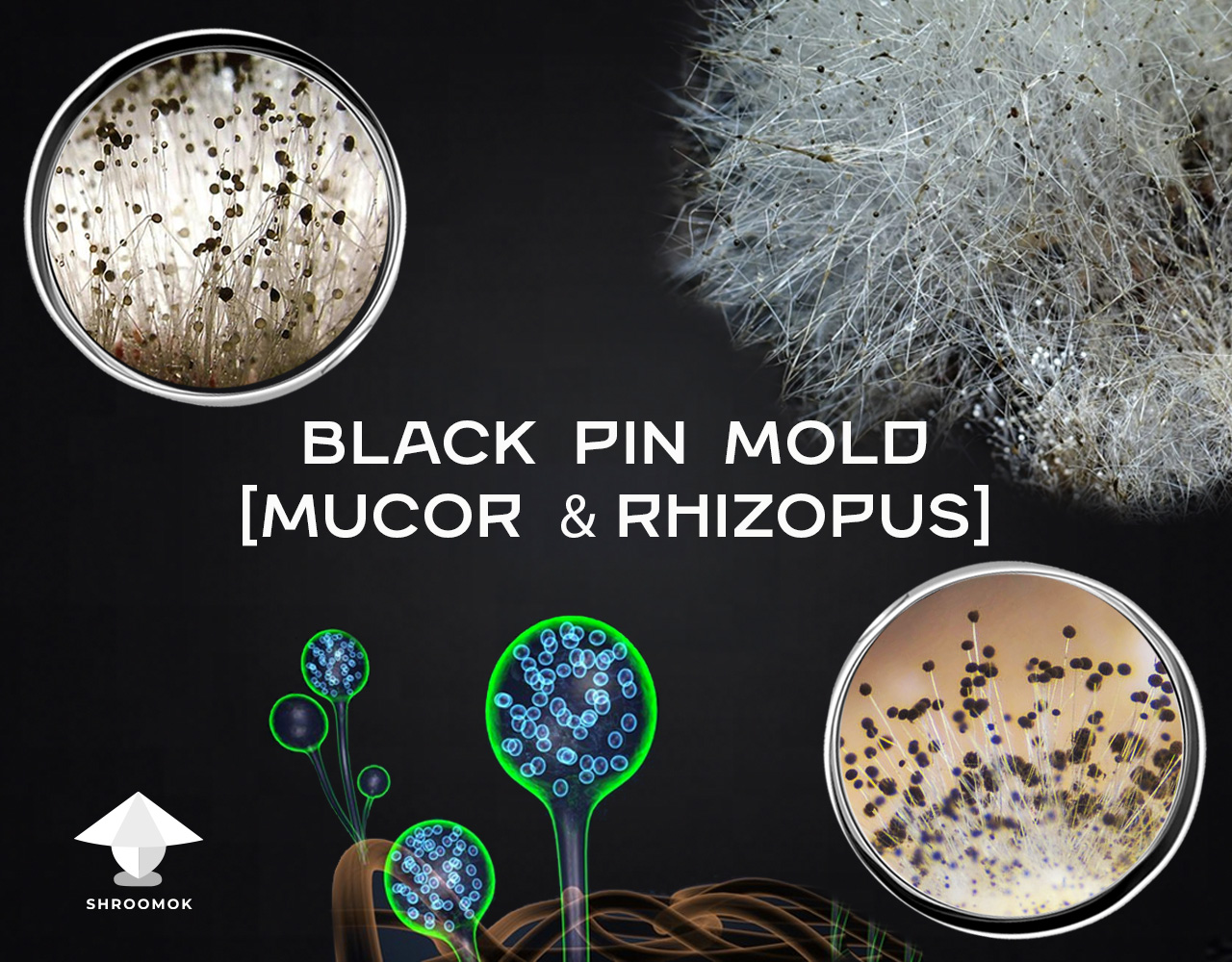 Black pin mold contamination – Mucor & Rhizopus – in mushroom cultivation
Black pin mold contamination – Mucor & Rhizopus – in mushroom cultivationMushroom cultivation is a kind of game of life...s
While mushroom growers try to keep mycelium and mushrooms healthy, other fungi strive to destroy them. This page is about one of the most common and bothering contamination – Black Pin Mold.
Here we discuss main symptoms of this contamination with photo examples, prevention and treatment tips, whether it is safe or poses a risk to human health.
What is Black Pin Mold
Black Pin Mold, also known as Pin Mold, Black Bread Pin Mold, or simply Bread Mold is a fungal contamination, caused by fungal pathogens belonging to the Mucor and Rhizopus genera. Mucor has approximately 40 species, while Rhizopus includes around 20 species.
Notably, Mucor piriformis and Rhizopus stolonifer are among the most prevalent species of contaminants in mushroom cultivation. Both belong to the same taxonomic group within the Fungi Kingdom, sharing the same division, order, and family.
Scientific classification:
Domain: Eukaryota
Kingdom: Fungi
Division: Mucoromycota
Order: Mucorales
Family: Mucoraceae
Genus: Mucor or Rhizopus
Species: i.g. Mucor piriformis and Rhizopus stolonifer (R. nigricans)
Difference between Mucor and Rhizopus
Mucor and Rhizopus are unwelcome intruders in the carefully controlled mushroom growing environment, where they compete for nutrients in substrate with the desired mushroom mycelium, potentially reducing the chances for yield.
Mucor and Rhizopus have similar visual (color and texture) and structural (sporangia and sporangiophores) characteristics, which makes it difficult to differentiate between these two species based on appearance alone.
Rhizopus may resemble Mucor, and vice versa. Moreover, symptoms of the same mold may vary depending on the conditions under which it develops – pH levels, temperature, relative humidity, and nutrients in substrate.
For mycologists, a key difference between Mucor and Rhizopus lies in the presence or absence of rhizoids and stolons. Mucor lacks these structures, while Rhizopus possesses rhizoids and stolons. Accurate identification is impossible without microscopic morphology – comparison of its spore-forming structures with the accompanying microscopic illustrations and/or micrographs.
Does this difference really matter in practice? Let's be honest. In practice, when growing mushrooms, even if you don't know whether it's Mucor or Rhizopus, the microscopic difference between them doesn't matter.
The reason is simple. The symptoms they cause look pretty similar. Moreover, the prevention and treatment measures required to combat these contaminants remain identical. Therefore, learning the microscopic details and differences between these types of mold may not be as important as understanding the main symptoms and effective methods for preventions and dealing with the problem.
Symptoms of Black Pin Mold contamination in mushroom growing
Color
Mucor on early stages starts with thin bright white or grayish mycelium. Later it turns dark-gray in color.
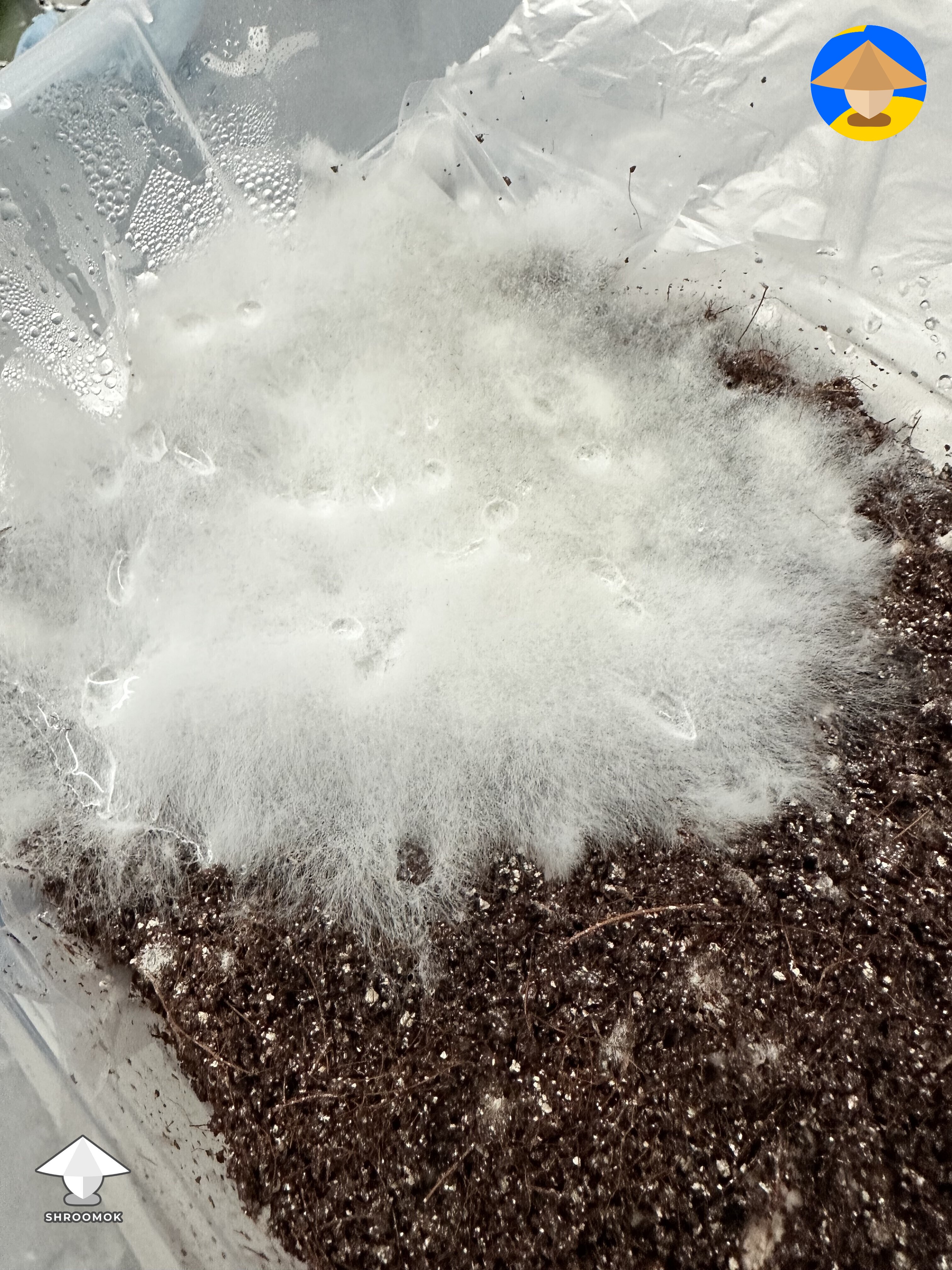
Rhizopus tends to be grayish, with occasional formation of a blue or yellow-colored coating on the substrate.
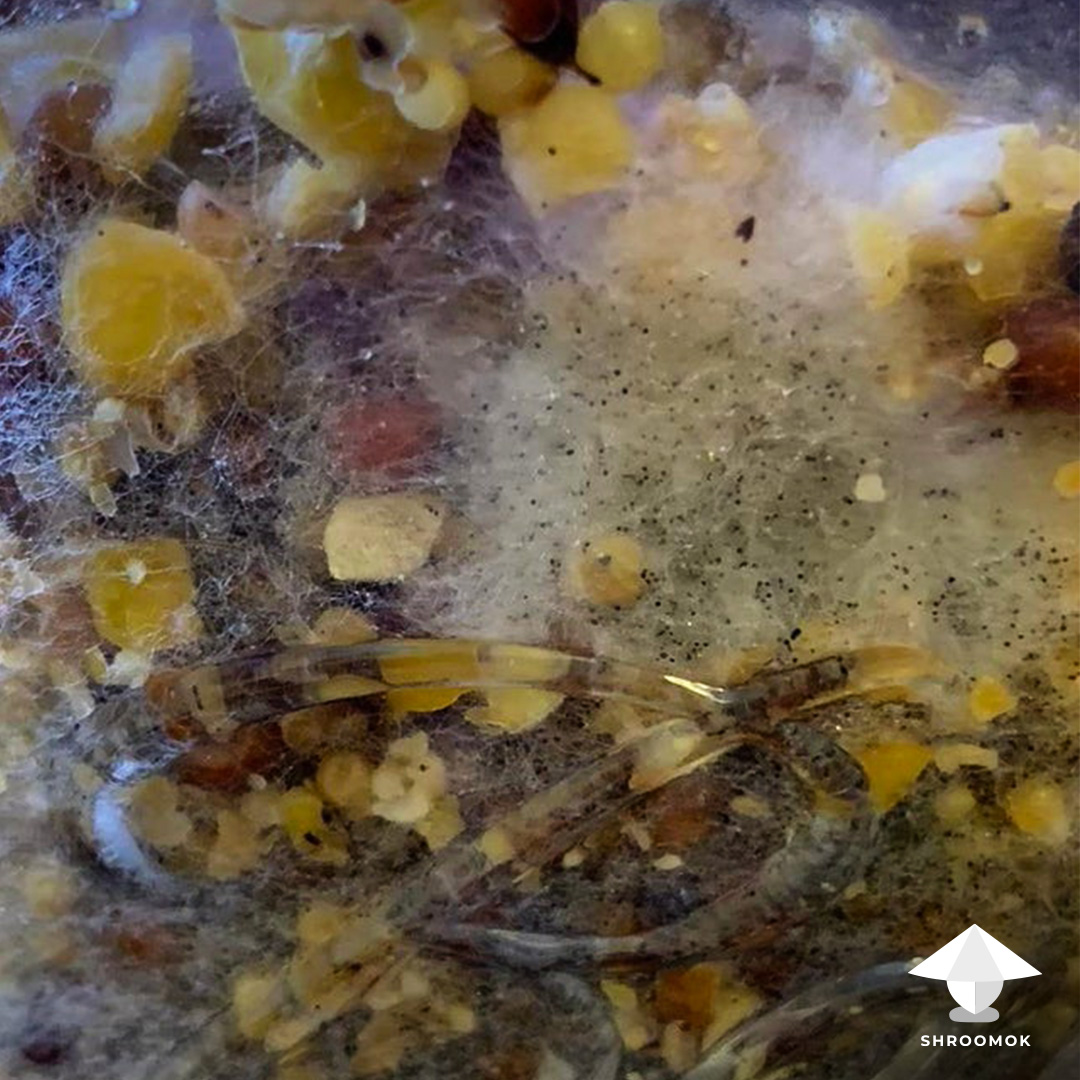
Gray formations resembling beads at the tips of the mycelium often occur as a result of spore formation and maturity. In the early stages, they are white, then become grayish or brownish.
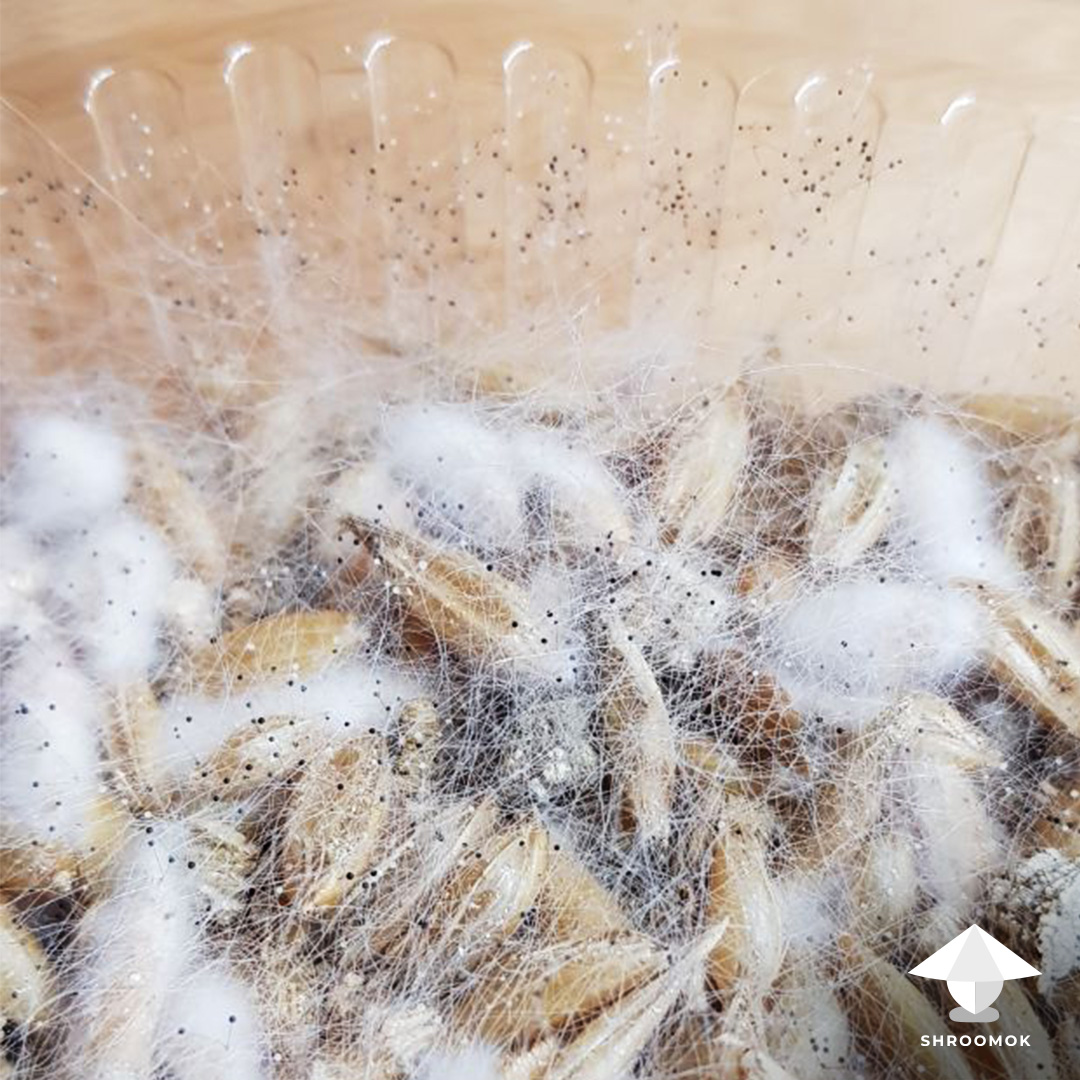
Later (in 12-24 hours) spores on the tips turn black color.
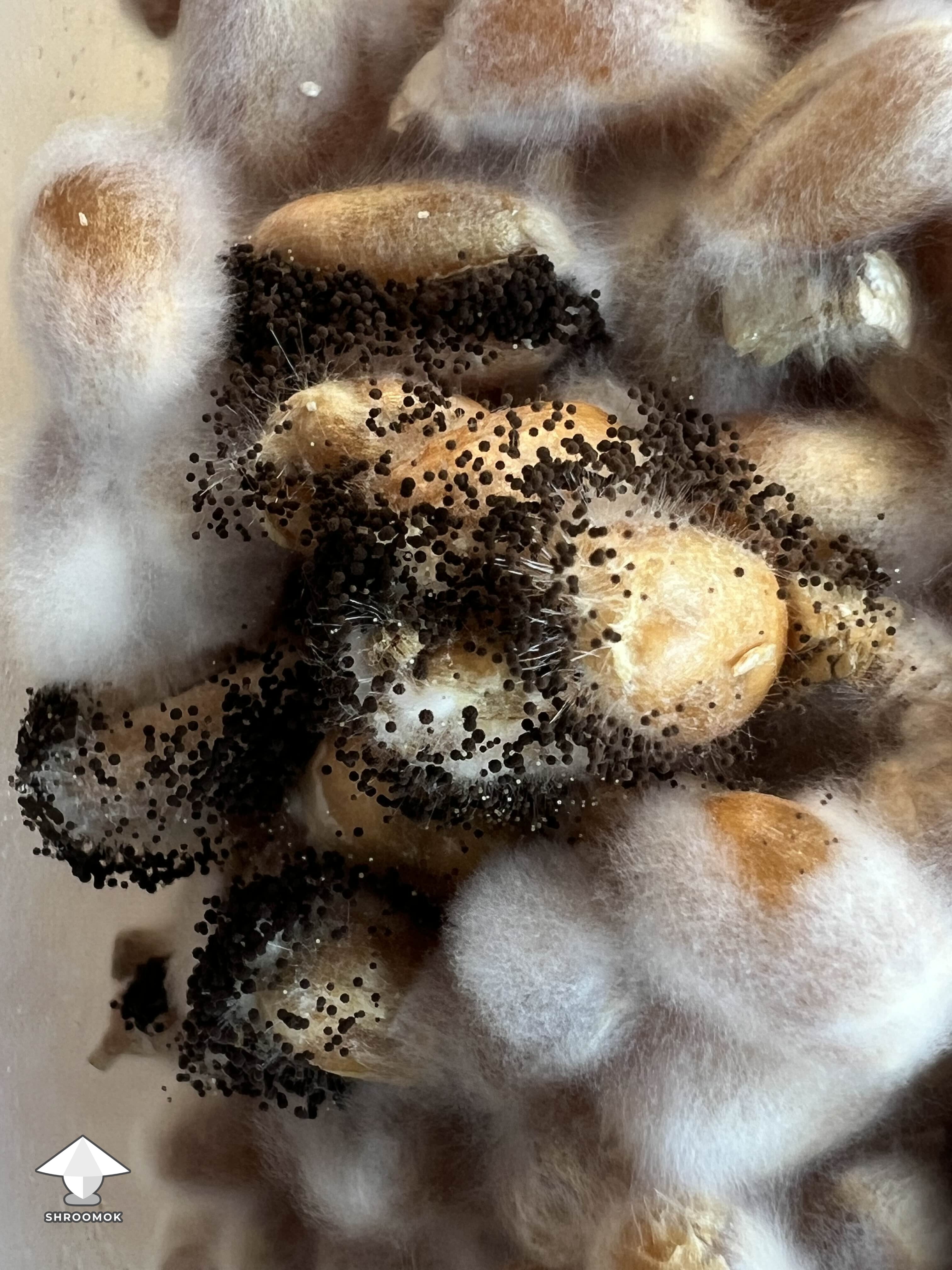
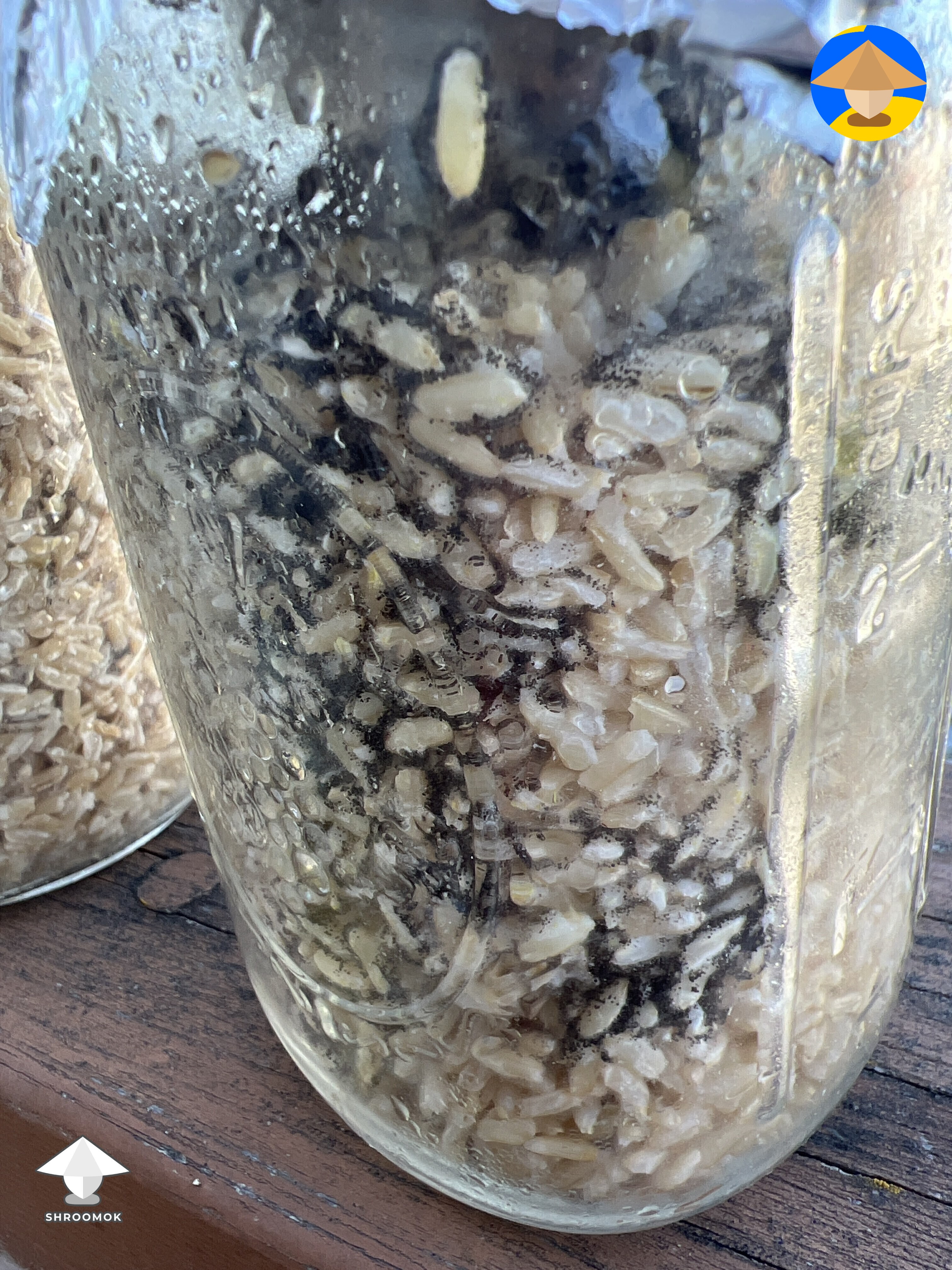 Black Pin Mold – happen overnight!
Black Pin Mold – happen overnight!Texture and growth patterns
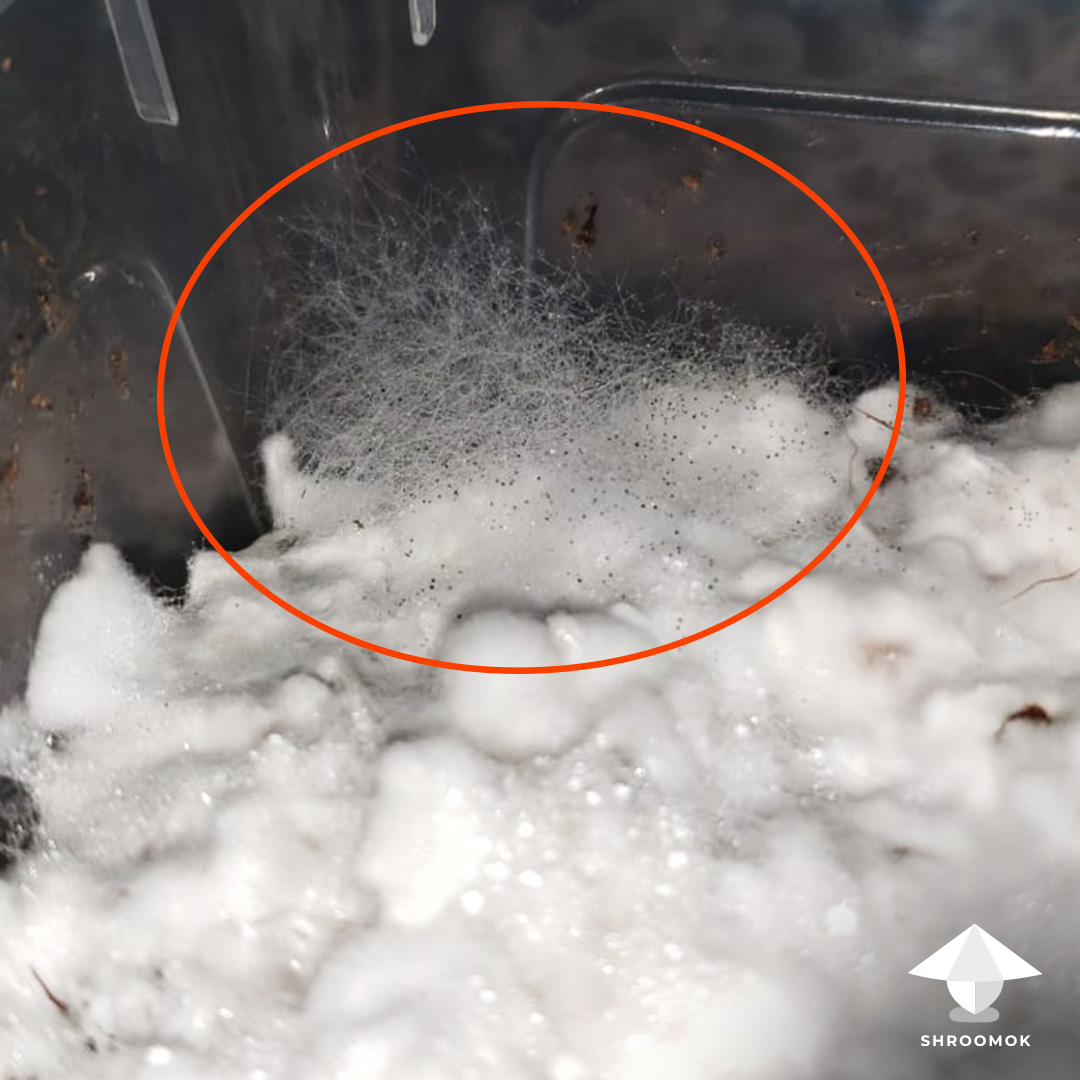
Both Mucor and Rhizopus have more cottony or fluffy texture compared to mushroom mycelium.
Mucor is relatively tall, branched, and may have spiky appearance often described as "cat-hair."
Rhizopus is shorter in height and mainly exhibits a flat, spreading growth pattern.
During sporulation, both molds form a dense layer of tall, airy, vertically oriented hyphae with gray or black heads. It resembles a forest of pins with black heads.
Another mold that has quite similar growth patterns – spiky thin fast growing mycelium – is Cobweb Mold (Dactyllium). The only difference is the color of spores – Cobweb has pink-red color while sporulating.
More about this contaminant here: How to identify and get rid of Cobweb Mold
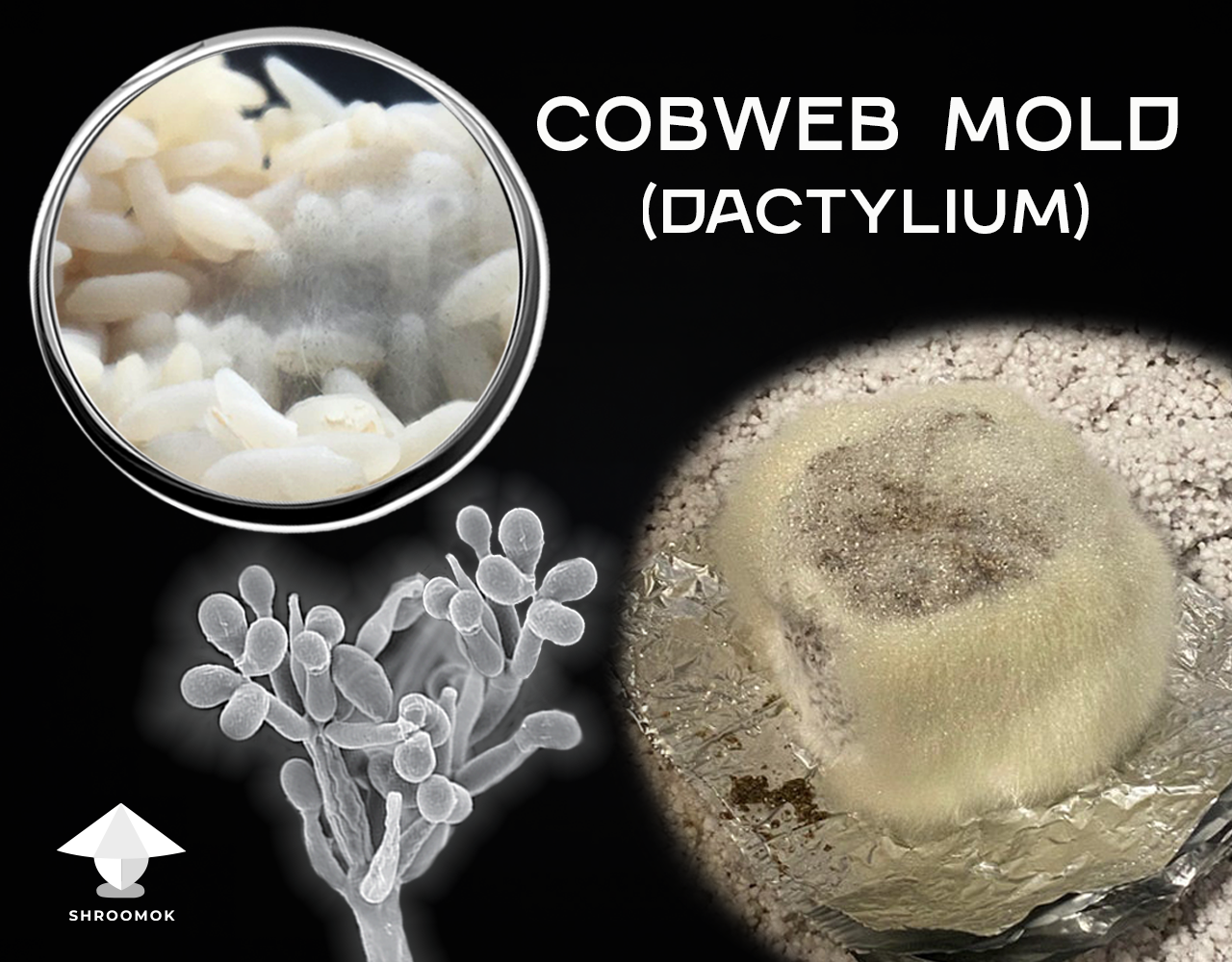
Mycelium thickness
Black Pin Mold mycelium is always thinner than mushroom mycelium.
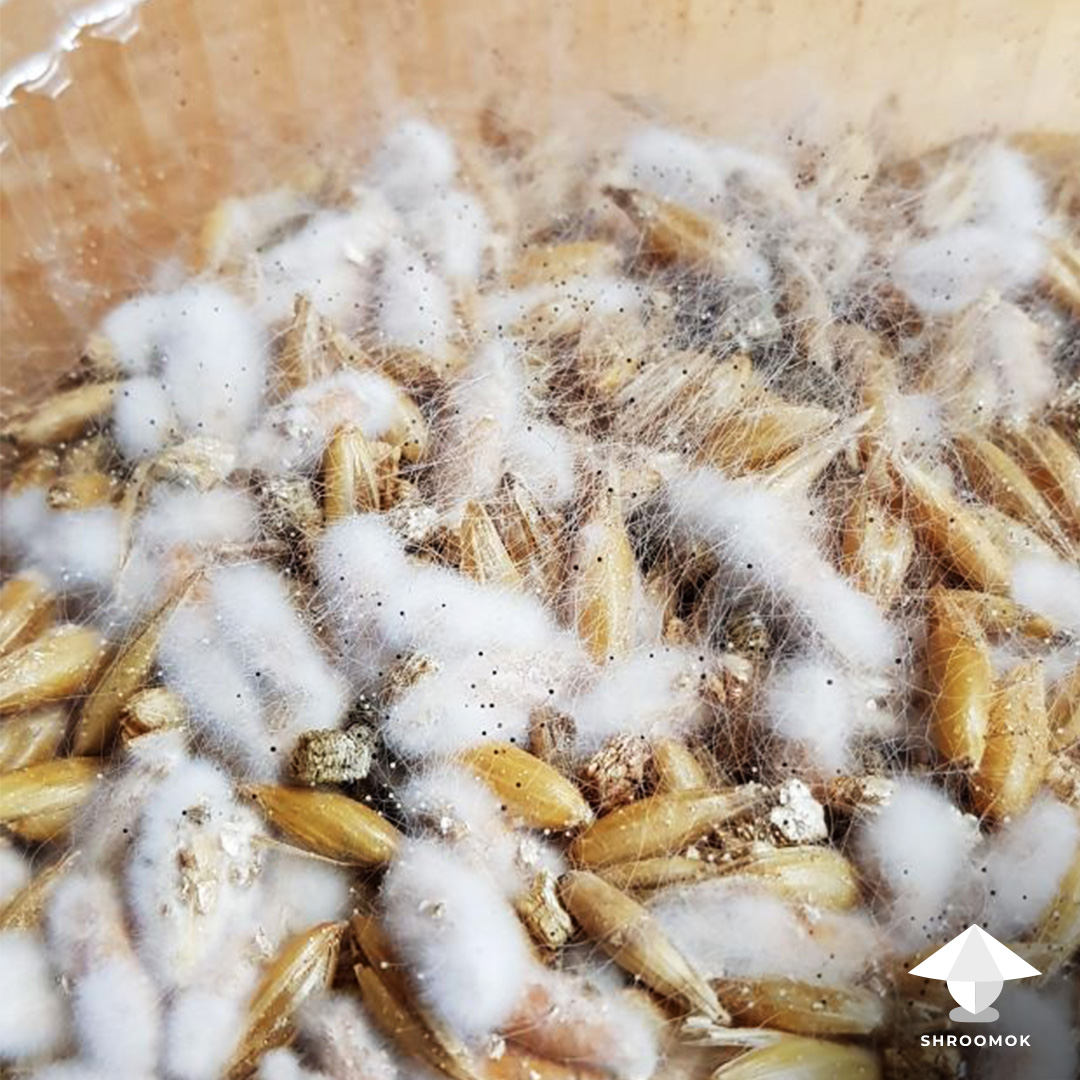
Speed of growth
These molds are fast-growing. At room temperature they can expand an area the size of a coin tenfold in just 24 hours. And completely colonize the top layer of mushroom cake or agar plate within 48 hours of the first signs of contamination.
Spores – gray or black pins – typically appear within 12-24 hours.
Here is an example. First signs of Black Pin Mold growth:
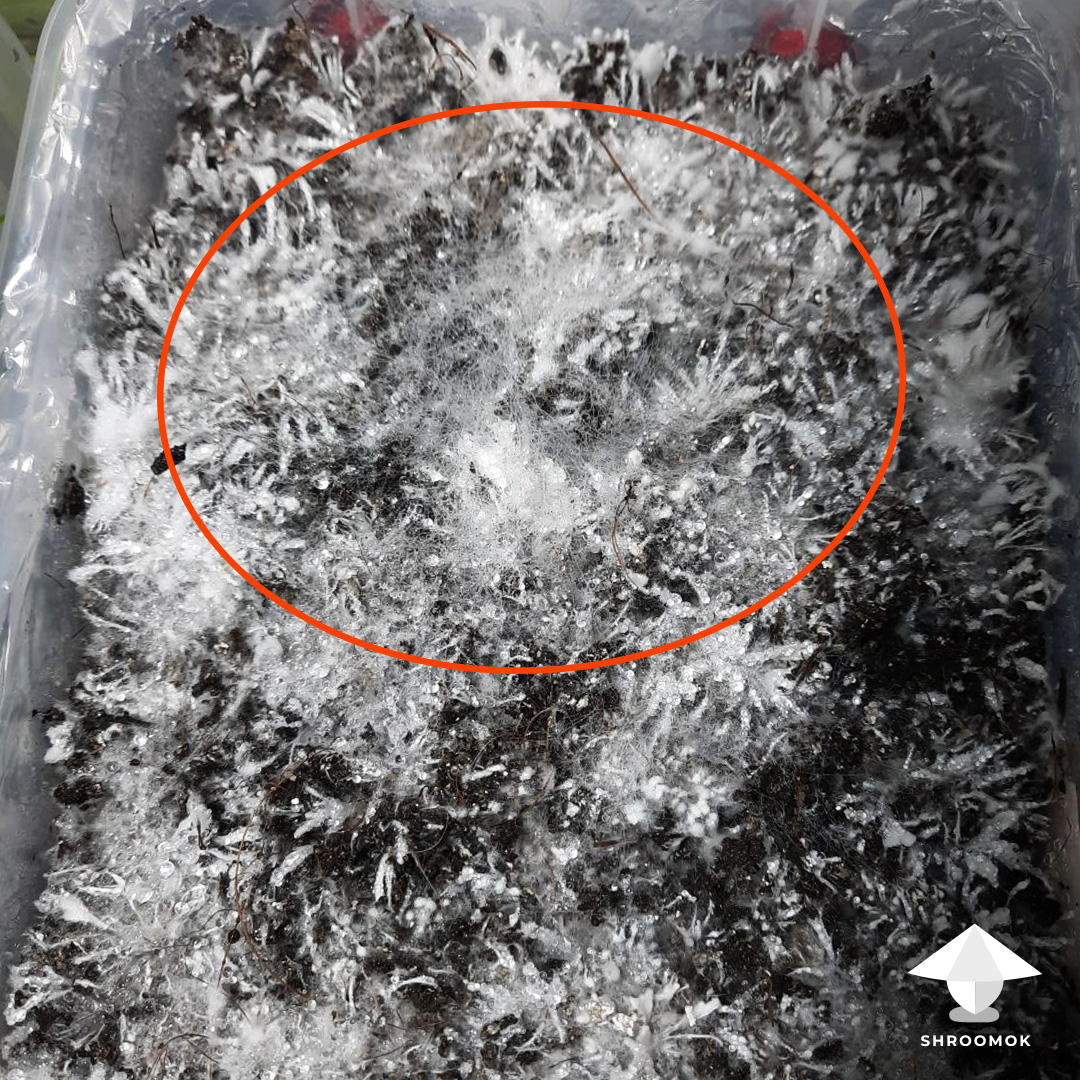
After 12 hours, the moldy area became denser and first tiny black pins appeared.
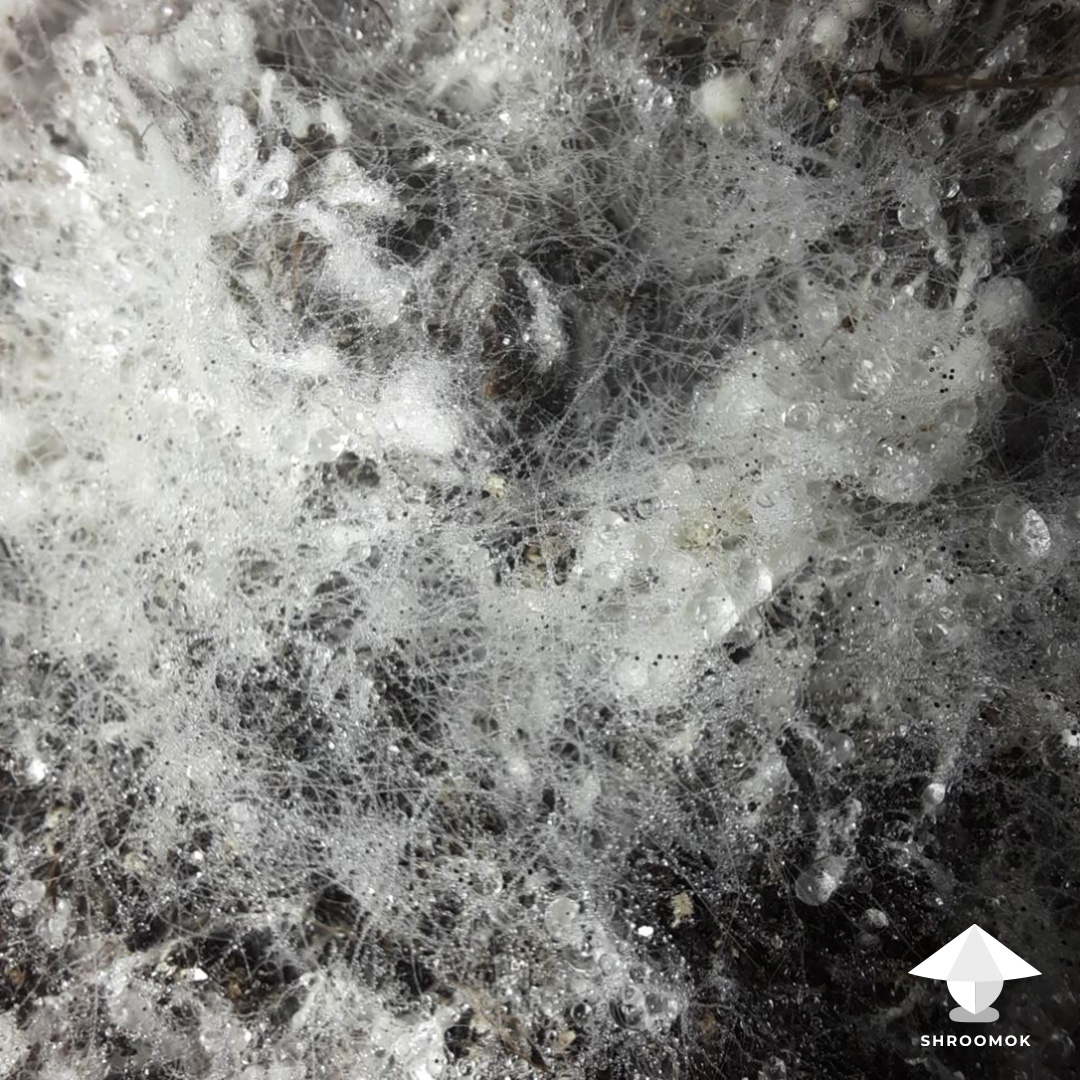
Temperature and speed of growth
Both Mucor and Rhizopus are thermophilic molds, thriving between temperatures of 20°C-30°C (68°F-86°F).
Mucor can tolerate lower temperatures, ranging from 32°F-41°F (0°C-5°C), and some species can survive freezing. However, they cannot grow at temperatures exceeding 81°F-86°F (27°C-30°C), for some species like M. pusillus up to 131°F or 55°C.
Rhizopus shows no growth below 41°F (5°C) and can grow in higher temperatures, up to 95°F-98°F (35°C-37°C).
Sporulation patterns on Agar
On PDA (potato dextrose agar) agar media, Mucor piriformis develops raised colonies and produces sporangia (gray or black pins) as they grow toward the edge of the plate.
Rhizopus stolonifer develops mycelia that spreads throughout the media, with sporangia mainly found at the edge of the plate.
Rotting
These molds are responsible for causing soft rot in various substrates, including fruits, vegetables, plants, mushroom pins, and fruit bodies.
Odor
Although there may be moldy or musty smell present, it is not a key symptom for pin mold. Visual signs and understanding of its growth patterns are more important characteristics.
While a musty or moldy odor may be present, it is not a key indicator of Pin Mold. More important characteristics are visual cues and understanding of growth patterns.
How to Prevent Mucor and Rhizopus
Mucor and Rhizopus molds can be found in various environments – soil, grains, bread, plants, decaying fruits and vegetables, animal poop. Indoors, their spores may lurk in dust, ventilation and air conditioning systems, refrigerators, and can even take hold on water-damaged materials such as furniture and wooden items.
To protect your mushrooms from these unwanted guests, follow these preventive measures.
Substrate Preparation. Substrates like grain, coco coir, soil, manure, or sawdust may contain Pin Mold spores. Heat treatment at temperatures ranging from 140-160°F or 60-70°C and higher for one hour is an effective way to eliminate all species of molds.
It means proper pasteurization or sterilization ensures a contamination-free start.
Maintain clean growing conditions. Use sterile tools and use filters (adhesive filter discs, micropore tape, polyfill or just sponge) to protect air vents in both the fruiting chamber and use proper filters for spawn jars or bags. Use filtered air for grow tents. Filters reduce the risk of airborne spores.
Ensure that all mycological processes are as sterile as possible, and consider using a Still Air Box, Fan Filter Unit, or Laminar Flow Hood when necessary.
Proper ventilation. Prevent stagnant air in the fruiting chamber by maintaining a constant fresh air flow. This can be achieved through natural air exchange or by using proper ventilation for Grow Tents (positive pressure and using filtered air through HEPA filter).
Regular monitoring. Check your mushroom cake regularly to catch the early signs of contamination. Early detection is crucial for treatment and preventing further spread.
Regular сleaning: Dispose of stale bread, fruits, and vegetables, as they can serve as carriers of mold spores and contribute to contamination.
Maintain regular cleaning of your refrigerator, ventilation system, surfaces, and don't forget to clean up all the items that hold the dust from time to time, like carpets and curtains.
Neglecting issues in your home such as leaks, poor ventilation, and irregular cleaning can foster various types of mold growth, affecting not only your mushroom cultivation but also potentially impacting your health
Black Pin Mold contamination treatment
When faced with Pin Mold contamination, a straightforward treatment can be applied to inhibit its growth and increase chances for successful fruiting and harvesting. To address this issue, follow these steps:
Soak a thick paper towel in 3% Hydrogen Peroxide (H2O2).
Carefully lay the soaked paper towel on the area affected by the contamination to seal it.
This treatment typically has an immediate effect: the Pin Mold mycelium dissolves, and H2O2 effectively kills mold spores. However, mold can appear again. Nevertheless, this simple and effective trick helps inhibit further mold development, giving your mushrooms time to mature and be harvested.
Additional Tip: You can make 2-3 treatments with 3% Hydrogen Peroxide, with a 12-hour break between treatments. This approach helps ensure thorough suppression of the contamination.
Important! If you observe gray or black spores already present, don't spray on the contaminated area, as spraying may cause the spores to spread throughout your cake.
Is Black Pin Mold toxic or safe
Mold spores are present outdoors and indoors, found in soil, the air, on surfaces, plants and on various foods like bread, fruits, and veggies. Black Pin Mold, caused by some species of Mucor and Rhizopus fungi, potentially leading to diseases in plants, soft rot and undesirable in mushroom growing.
However, they have significant roles in nature and practical applications in medicinal and industrial contexts:
Mucor is involved in the production of natural food colorants and is vital in biotechnology for producing enzymes and various metabolites. It's also used in the production of organic acids.
Rhizopus finds applications in producing organic acids, cortisone, and alcoholic beverages. In the food industry, it serves as a fermentation agent, notably for making tempeh, a traditional Indonesian food. Additionally, Rhizopus plays a crucial role as a soil decomposer in the carbon cycle.
Basically, Mucor and Rhizopus molds (including species found in mushroom cultivation) are considered safe for humans.
Most species are unable to infect humans or endothermic animals because they struggle to thrive in warm environments close to 98°F or 37°C and higher. This means that a healthy immune system can effectively cope with these molds. Serious infections like zygomycosis or mucormycosis are rare and typically pose a risk to individuals with weakened immune systems.
Anyway, never eat moldy mushrooms, bread, fruits and vegetables. Individuals with mold allergies should avoid handling contaminated food and mushrooms, as high concentration of mold spores in the air may cause coughing, wheezing, runny nose, and other allergy-like reactions. Moldy products can potentially cause respiratory infections, sinusitis, and otomycosis.
Bottom line
Black Pin Mold is a fast growing fungal contamination. It is easy to recognize and is one of the easiest types of mold to treat.
A small patch of pin mold on mushroom cake will not cause any diseases to people, but it is important to control the concentration of mold spores both in the growing environment and in the living environment. By taking preventive measures, identifying symptoms early, and treatment in time, it is possible to save contaminated mushroom cake and get a good harvest.
If you find this guide helpful, you can support me on buymeacoffee
You can also leave your comments on this page below ⬇️ get help for free on Forum or request Personal Consultation
Have a happy growing and healthy shrooms!
Peace, Shroomok
Have you read the article about Black Pin Mold carefully? It's time to pass a small exam!
Shroomok's choice


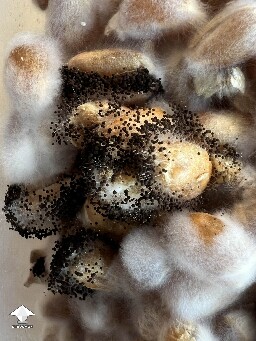
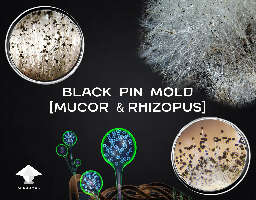
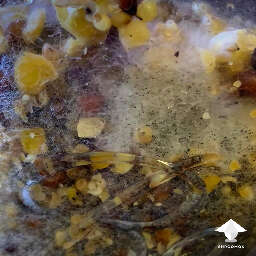
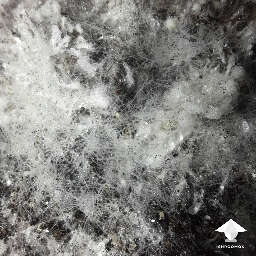
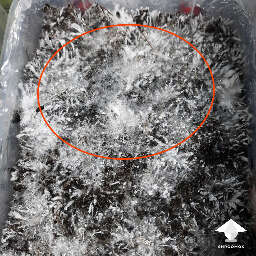
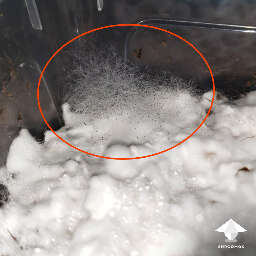
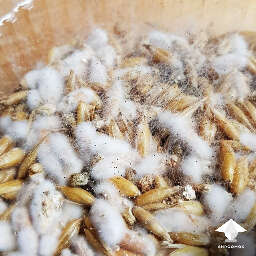
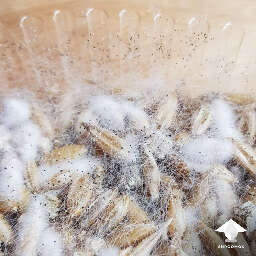
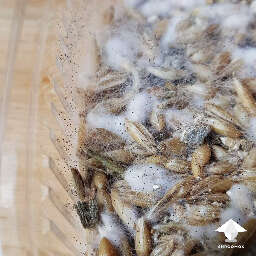
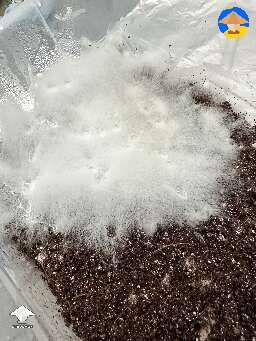
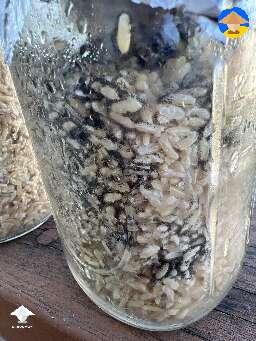
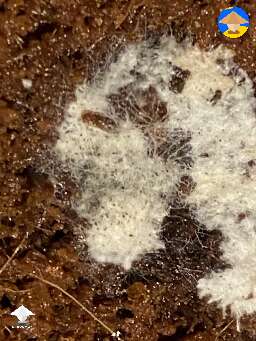
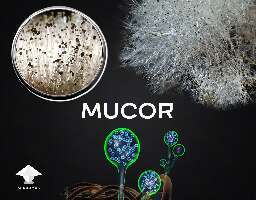
Comments
Add comment